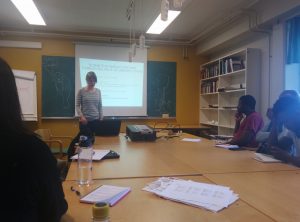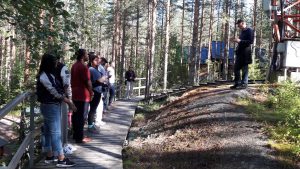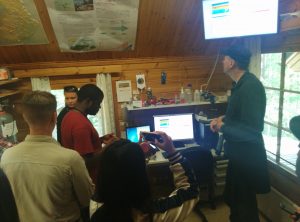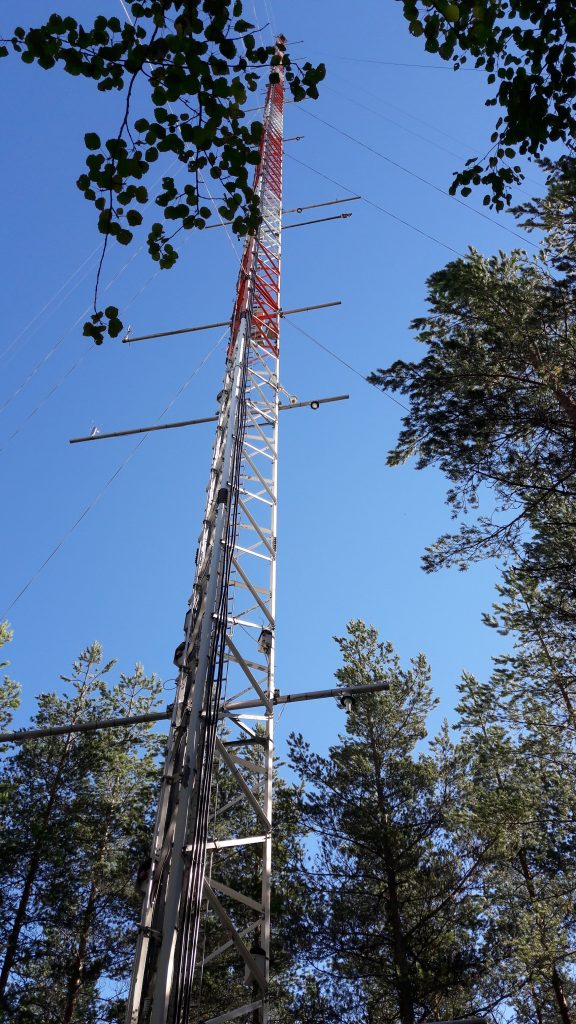Day four of the course began at the Hytiälä Forestry Field Station. The students enjoyed a discussion on the subject of forest ecosystem-atmosphere interactions by Pauliina Schiestl-Aalto; a doctoral student specializing in forest-atmosphere interactions at the University of Helsinki. The aim of this presentation was to help the students understand the mechanisms involved when forests (land ecosystems in general) interact with climate as well as to gain an understanding of how these interactions are studied. Docent Pauliina Schiestl-Aalto explained four ways forest vegetation affect climate: forest takes up and releases atmospheric CO2; it directly modifies the surface radiative properties of the earth; it contributes to the atmospheric chemistry and particle formation; and forest releases water vapor into the atmosphere. The students were helped to understand that the impact of forest on climate may be different depending on whether we are talking in the context of tropical forest, temperate forest or boreal forest.
Various interaction mechanisms (carbon sequestration, radiation absorption, evapotranspiration and aerosol formation) which play important roles in understanding the impact of forest on climate were highlighted. These different interaction mechanisms are studied at SMEAR (Station for Measuring Ecosystem Atmosphere Relations) stations. However, the effect of aerosols in forest-climate interactions remains unknown in the scientific community.
Later, the students were taken on an excursion to SMEAR II- station at the Hytiälä Forestry Field Station. The students were given a talk and tour of the SMEAR II-station by Janne Levula- a research technician at the University of Helsinki Department of Physics. The SMEAR II-station is one of five multidisciplinary research stations measuring forest ecosystem-atmosphere relations in Finland. The SMEAR II-station is a leading aerosol research center in the world and holds the record of the longest time series of aerosol formation over forest (since 1197) as well as one of the longest measurements of net ecosystem exchange of CO2 and component processes in forest (since 1996).
Finally, the students departed the Hytiälä Forestry Field Station to their individual accommodations after spending two days at the research facility.
-Stephen Elonge-Fobia



